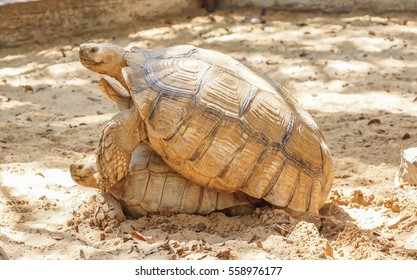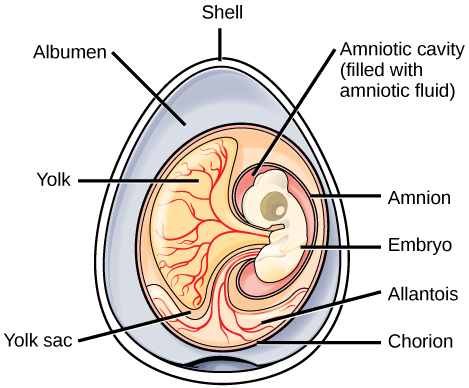Reptiles- Reproduction Study Guide
Introduction
Reptiles, a class under phylum Chordata, are tetrapod vertebrates that show a gradual complication in organ structures and resemble many structures present in a higher group of vertebrates. Similarly, like other vertebrates, reptiles too maintain separate sexes, males and females. Although reptiles are a group that shows great variety, the basic reptile reproductive structure is fairly consistent.
How do Reptiles Reproduce?
- Reptiles are classified separately into both sexes, and therefore Reptile reproduction involves sexual modes.
- The fusion of gametes takes place internally through a process called internal fertilization.
- Both the sexes in reptiles have special sexual structures that help in fertilization.
- There exist paired testes in males and paired ovaries in females, both of which lie dorsomedial in the abdominal cavity.
- Females also possess a right and left oviduct without a true uterus.
Process of Reptilia Reproduction
- Both males and female genital opening is termed cloaca.
- In the case of females, the content of the oviduct gets directly discharged into the cloaca through the genital papillae.
- In the case of reptiles, the copulatory organs remain retracted within the body. Male reptiles possess one or two penises that are homologous to a mammalian penis. In the case of reptilia reproduction, the site of fertilization is the cloaca. After copulation, the male deposits their sperm into the female cloaca.
- Once the semen is released into the female cloaca, the sperm then swims up through each oviduct into an opening adjacent to each ovary.
- After ovulation, eggs are released directly into the oviduct, which acts as a passage through which eggs are laid.
- Development mostly occurs inside the oviducts before they are laid. Both oviparous and viviparous modes of reproduction are exhibited by reptiles, which are illustrated below.
Modes of Reproduction in Reptiles
Oviparous reproduction
Most of the reptiles reproduce utilizing egg-laying. The embryo gets its required nutrition from the egg yolk. This form of reproduction is mostly seen in turtles and tortoises, iguanas, etc. Other reptiles, too, lay eggs, called amniotic eggs.
Egg formation
Like the birds, egg formation in reptiles can be observed through the following steps.
- Hormonal influence leads to yolk formation inside the liver. This process is carried out under the influence of enhanced estrogen hormone levels.
- The yolk is transported to female reproductive tracts and stored within the oocytes. This stage has been associated with high triglycerides, hypercalcemia, and so on.
- The perfect stage of ovulation has not been marked properly, and however, it is seldom seen that copulation brings about ovulation. However, when ovulation occurs, yolk-containing oocytes are released into oviducts, fertilized.
- In oviducts, the oocytes are surrounded by soft shell tissues and albumin.
Amniotic egg
Eggs laid by reptiles are amniotic eggs that have indicated advancement into a terrestrial lifestyle. In amniotic eggs, the shell adds an extra layer of protection for the developing embryo. The shell is permeable enough to allow easy oxygen and carbon dioxide exchange.
-
Albumin, commonly called egg white, provides water and protein to the growing embryo. On the other hand, yolk offers energy to the embryo due to its fatty nature.
-
Amniotic eggs also contain three extra-embryonic membranes: chorion, amnion, and allantois. Although these extra-embryonic membranes are not directly associated with the embryonic body, they play a crucial role in reptile reproduction.
-
Chorion surrounding the yolk is responsible for gaseous exchange between the embryo and the external environment.
-
Amnion and amniotic fluids act as a cushion that protects the embryo from external shocks.
-
Allantois collects nitrogenous waste produced by the developing embryo and therefore facilitates the removal of metabolic wastes. Additionally, allantois also holds a certain role in the respiration process.
-
The shells of reptiles are thin and leathery, unlike those of bird eggs.
Ovoviviparous reproduction
While all reptiles reproduce by laying eggs, i.e., oviparous reproduction, certain species of snakes and lizards show ovoviviparous reproduction. It means that females, in this case, nurse eggs internally and give birth to young. The newborn, in such cases, comes out covered in amniotic fluids, just as seen in mammals.
The breeding period of reptile reproduction
In general, it is observed that most of the reptiles reproduce during specific seasons along with certain other species that do not show any such specifications. Usually, the following two breeding patterns have been observed:
– Seasonal or discontinuous breeding
As the name suggests, seasonal reproduction refers to the reproductive period in reptiles being limited to particular seasons. Variations with seasons are mostly seen in males, whereby seasonal changes significantly affect spermatogenesis. Females, on the contrary, are seasonally monoestrous or polyestrous.
– Acyclic or continuous breeding
This breeding behavior is marked by a similar reproductive activity throughout the year. Reptilians usually exhibit this form of breeding pattern belonging to the tropical regions.
Nurturing of young
Unlike Amphibian eggs, in reptile reproduction, there remains a larval stage. Offspring from hatched eggs are like miniature versions of adults and can locomote. Parents of reptile offspring do not show nurturing habits, and therefore the young falls under predation.
Conclusion
- Most of the reptiles exhibit sexual reproduction and internal fertilization.
- Reptiles are the first class to show the development of amniotic eggs. The eggs are laid on land, providing a clear indication of terrestrial transition.
- No such nurturing period exists for reptile young.
FAQs:
1. How do reptiles reproduce?
Most reptiles reproduce through sexual reproduction, and both male and female gametes lead to internal fertilization. However, certain groups of lizards reproduce asexually and lay eggs without any male mating partner.
2. Do reptiles lay eggs or give birth?
Reptiles are oviparous organisms, which means reptiles lay eggs to reproduce.
3. What reptiles reproduce asexually?
Certain lizards, such as New Mexico Whiptail, reproduce asexually, unlike their other counterparts.
4. Do reptiles need males to reproduce?
Usually, yes, the presence of males is necessary for internal fertilization and, therefore, sexual reproduction. However, in certain species, the presence of males is not required.
5. How do whiptail lizards reproduce?
Whiptail lizards reproduce using parthenogenesis.
6. What animals reproduce without a male?
Whiptail lizards, greenflies, water fleas, scorpions, termites, etc., do not require males. Females in all these cases reproduce through parthenogenesis.
7. Can reptiles impregnate themselves?
In cases where parthenogenesis is a governing reproductive function, impregnation of own is possible for reptiles.
We hope you enjoyed studying this lesson and learned something cool about Reptiles: Classification! Join our Discord community to get any questions you may have answered and to engage with other students just like you! Don’t forget to download our App to experience our fun, VR classrooms – we promise, it makes studying much more fun!😎
Sources:
- Reptile Reproduction. https://flexbooks.ck12.org/cbook/ck-12-biology-flexbook-2.0/section/12.15/primary/lesson/reptile-reproduction-bio/. Accessed 3 Dec, 2021.
- Courtship and fertilization. https://www.britannica.com/animal/reptile/Courtship-and-fertilization. Accessed 3 Dec, 2021.
- Reproductive Anatomy & Physiology in Reptiles: Nine Key Facts. https://lafeber.com/vet/reproductive-anatomy-physiology-in-reptiles-nine-key-facts/.
- How Do Snakes Mate?. https://sciencing.com/snakes-mate-4568663.html. Accessed 3 Dec, 2021.
- Characteristics of Amniotes. https://courses.lumenlearning.com/boundless-biology/chapter/reptiles/. Accessed 3 Dec, 2021.


